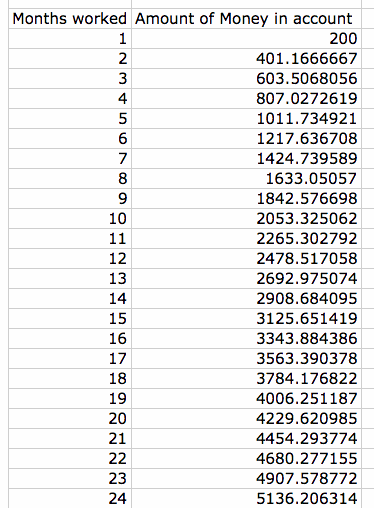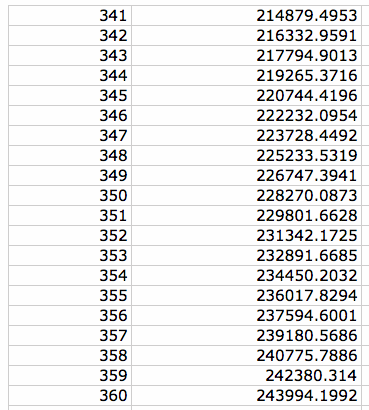

Amberly Roberts
Final Assignment: Saving for Retirement
So, the debate began as soon as my husband accepted his first job at a private school. What debate you ask? Public vs. Private school benefits.
This investigation focuses on retirement.
My husband and I have had countless conversations about this topic. As soon as people hear that he worked in a private school, they made the comment, "When are you going to public school? You can't beat the retirement." While we felt that this was a true statement (my father is a year away from retiring from the pubic school system), we felt that surely there were options available that could somehow closely match that of the public school system.
Before we go any further, let me explain the public school system retirement which I will refer to from here on as TRS (Teacher Retirement System).
When working in a public school, you are not given the option of whether you want to put money into retirement. You are forced to. There are no exceptions. Before you come home with your paycheck, a certain percentage (approximately 6%) has been taken out and given to TRS. When you have put in 30 years of service and retire, TRS then sends you monthly paychecks that are 60% of the amount you brought home while working. They will send you these checks for the rest of your life. It sounds and IS a nice benefit.
So - a specific case. Say that someone begins teaching at age 23. Over the 30 year teaching experience, their average salary was 40,000. They will be able to retire at age 53. Average life expectancy is approximately 78. Thus, this person will make 60% of $40,000 for 25 years. This totals $600,000.

However, it's important to note that $72,000 of the $600,000 was the sum of the money taken out of the paychecks each month. So, by looking at it in this way, TRS is "giving you" $600,000 - $72,000 = $528,000 over the course of 25 years.
But, what if you teach in private school, like my husband? What if you put away 6% of your paycheck in your own account (savings, 401K, money market account, etc.)? How much would you accumulate over the 30 year teaching period?
So, just like before - a specific case. Say that someone begins teaching at 23. Assume that their average salary was 40,000 over the 30 year teaching period. They want to retire after 30 years as well. My personal banker has informed me that acquiring an interest rate of approximately 7% is attainable right now. You could get better, but you certainly could find worse rates. I am basing my calculations on this 7% interest rate assumption. I am also assuming that the money is compounded monthly.
Here's a spreadsheet that shows the results.
 |
The spreadsheet uses a formula to make calculations.
If you plan of spending 60% of your working salary each year, then this amount gives you funds for approximately 10 years. Thus, your savings will match TRS for 10 years. |
|---|---|
| (many calculations....) | |
 |
Analysis:
If you plan to live for a long time, the pubic school retirement system provides more security. There is never any worry about running out of money. However, once you are gone, the money is gone as well. There is no such thing as "leaving your retirement to your kids."
The private school plan provides a retirement comparable to TRS for 10 years. If you plan on living past that, the money will run out.
Further Analysis:
The work associcated with the "Private School Plan" assumes that the lump sum of $243,994.20 is taken out all at once. Certainly, it does not have to be this way. It is more reasonable to think that you would take out your annual salary each year. In doing this, the other money remains in the account and....you've got it....earns more interest. This is great news for this plan. Taking out money annually extends the 10 year period to a 17 year period! So, in considering this, we can now say that the private school retirement will last for approximately 17 years. Not bad.Note:
I find the spreadsheet to be extremely helpful in this investigation. It allows me to add money to the account each month (the $200). Before using spreadsheets, I could only calculate the interest earned on an initial amount of money over a set period of time. And, as we know, the amount changes every month. Performing 360 separate calculations on my TI-83 seemed a little overwhelming. The spreadsheet does it in seconds.
Click here to return to the home page